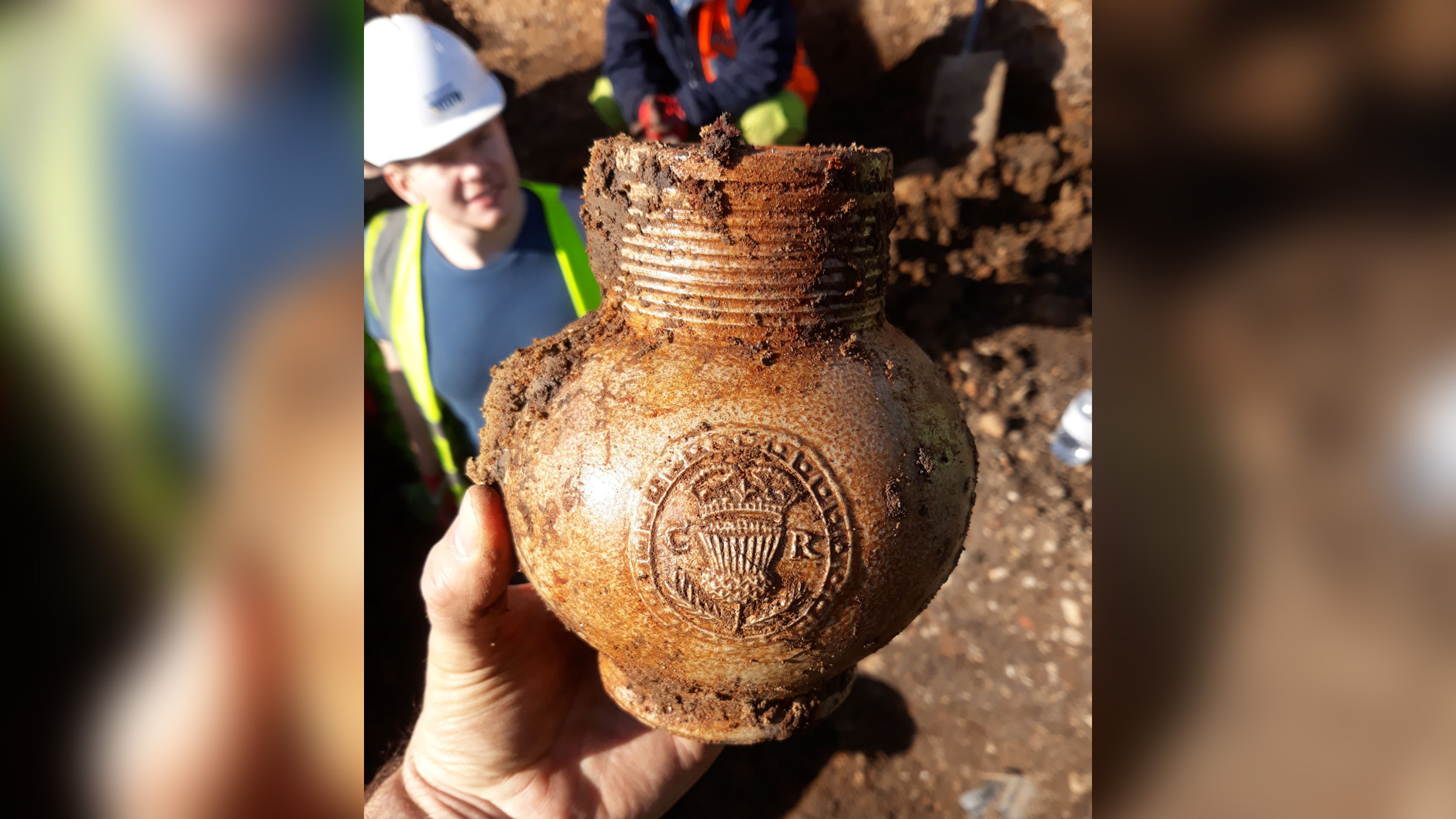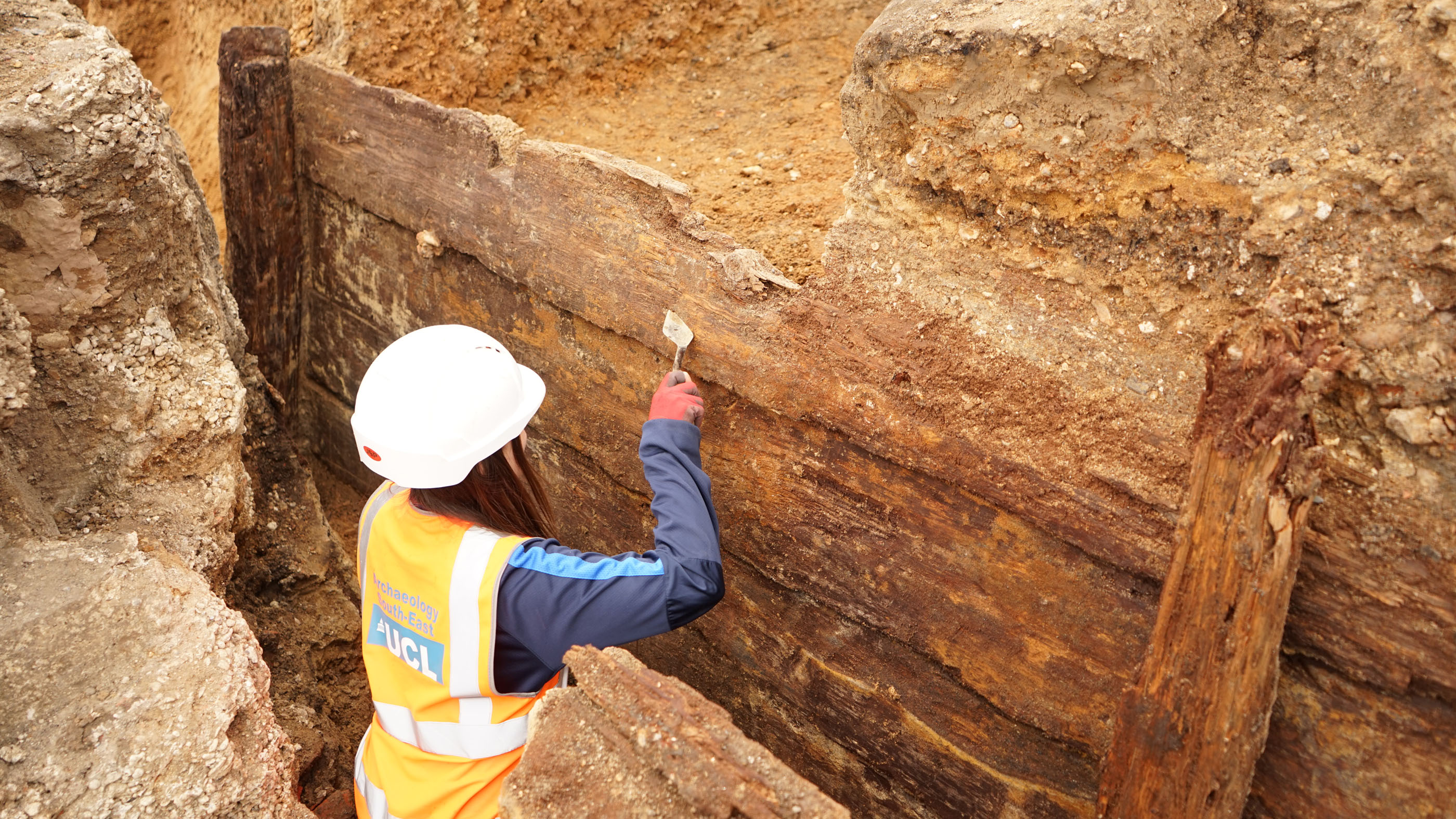London's 'oldest theater,' built just 3 years after Shakespeare's birth, discovered

The remains of what may be the oldest theater in London, dating to the start of Queen Elizabeth's reign in England, have been unearthed on land earmarked for a new housing development in the East End of the city.
The buried ruins are thought to be from the Red Lion playhouse, the first purpose-built theater in the English-speaking world, which was founded as London grew into a major Renaissance city. At that time, plays were the premiere form of entertainment, beloved of Queen Bess herself.
Researchers from Archaeology South-East, the commercial arm of the Institute of Archaeology at University College London (UCL) discovered buried timbers, artifacts and brick walls at the site in Whitechapel in London's East End last year.
Related: 30 of the world's most valuable treasures that are still missing
Little is known about the Red Lion playhouse, except the rough location where it was built in about 1567, and that it was the subject of two surviving lawsuits that describe its outdoor stage and seating. The buried structures match the descriptions from the time, while other evidence supports the conclusion they are from the playhouse, said Steve White, the archaeologist who led the excavations.
"The reason we were excavating these areas was because of the potential for finding the Red Lion," White told Live Science. "Once we came off-site and analyzed the stratigraphic sequence, material culture, historical lawsuits, land deeds and the cartographic evidence, it all pointed in this direction."




London playhouse
Records show the Red Lion was built by "grocer and citizen" John Brayne, who went on to cofound "The Theatre" in the Shoreditch district of London's East End in 1576 — a venue that staged plays by a young William Shakespeare in the 1590s.
Get the world’s most fascinating discoveries delivered straight to your inbox.
Shakespeare, who was born in 1564, was just a tot when the Red Lion was built in 1567.
But it was the first of several playhouses built in London in the decades that followed — a burgeoning theater scene that culminated in hosting the plays of Shakespeare and his contemporary playwrights, such as Christopher Marlowe and Ben Jonson.
Related: Gallery: In search of the grave of King Richard III
The first of the surviving lawsuits about the Red Lion playhouse, from 1567, alleged that Brayne had used trickery to mortgage 6 acres (about 2 hectares) of land to build "the house called the red lyon."
The second lawsuit, from 1569, relates to an action Brayne brought against his carpenters, alleging that the timber "scaffolds" — which may have referred to galleried seating — were poorly made. It includes a description of the stage as 40 feet (12.2 meters) north-by-south, 30 feet (9.1 m) east to west, and 5 feet (1.5 m) tall.
Those dimensions almost exactly match the unusual timber structure found in the excavations at Whitechapel, according to a UCL statement, while nearby postholes may be the remains of the "scaffolds," or seating.
The excavations also unearthed two beer cellars and a stash of drinking glasses, ceramic cups, two-handled drinking mugs, bottles and tankards, which are thought to have come from the adjacent Red Lion Inn, where the playhouse got its name.
Elizabethan theater
Despite these clues, archaeologists still have a ways to go before they can say that the ruins at Whitechapel are those of the Red Lion playhouse, White said.
However, if a forthcoming analysis strongly indicates that they are, "the discovery of London's first permanent playhouse will be of immeasurable importance," said Tiffany Stern, a professor of Shakespeare and early modern drama at the University of Birmingham's Shakespeare Institute in the U.K., who was not involved in the excavations.
The Red Lion was the first of several playhouses established in London as the city grew rich and powerful under Queen Elizabeth, Stern told Live Science..
"There had always been occasional plays put on in alehouses and taverns," Stern said. "But for a permanent structure to be built, given over solely to play going, there needed to be enough spare, wealthy people to fill it on a daily basis."
While some Elizabethan plays are still performed — such as the plays of Marlowe and the early plays of Shakespeare — audiences then were looking for different things from theater than modern audiences.
Among the attractions were the language used, which was often in verse: "The beauty of language was one of the things they were going for," Stern said.
The actors used expansive gestures and dramatic pronunciation: — "They weren't going for naturalism," Stern said. And many Elizabethan plays concerned God and revenge, "perhaps because the justice system was so unfair," she said.
- Photos: Major Roman settlement discovered in North Yorkshire
- In photos: Stone monument discovered in Scotland
- In photos: A walk through Stonehenge
Originally published on Live Science.
OFFER: Save 45% on 'How It Works' 'All About Space' and 'All About History'!
For a limited time, you can take out a digital subscription to any of our best-selling science magazines for just $2.38 per month, or 45% off the standard price for the first three months.
Tom Metcalfe is a freelance journalist and regular Live Science contributor who is based in London in the United Kingdom. Tom writes mainly about science, space, archaeology, the Earth and the oceans. He has also written for the BBC, NBC News, National Geographic, Scientific American, Air & Space, and many others.

